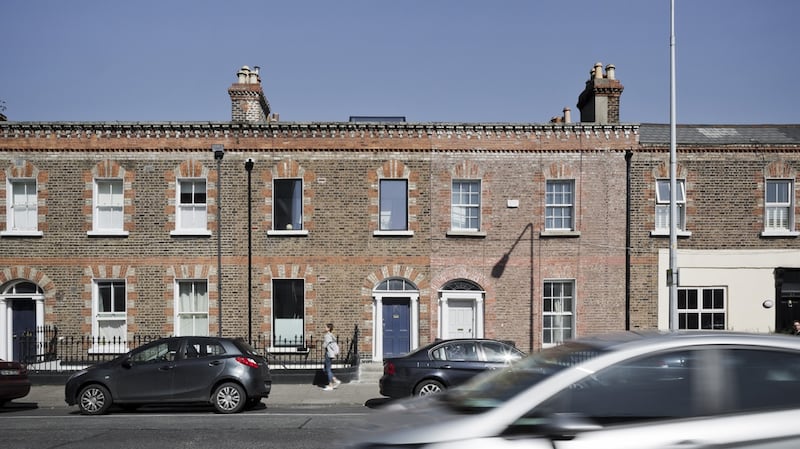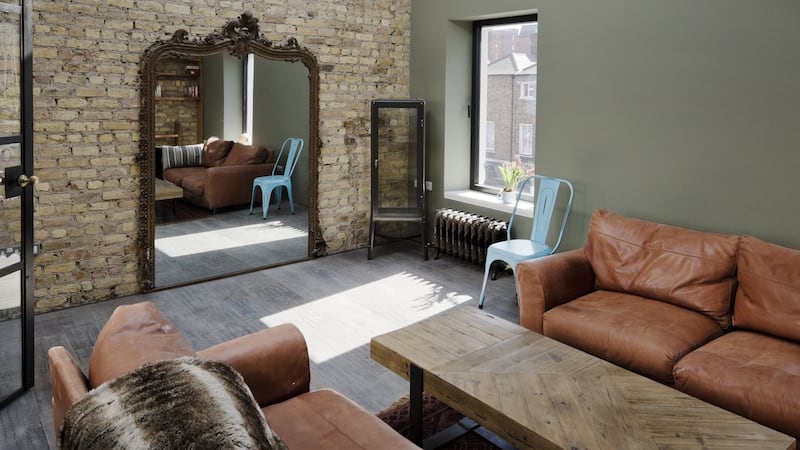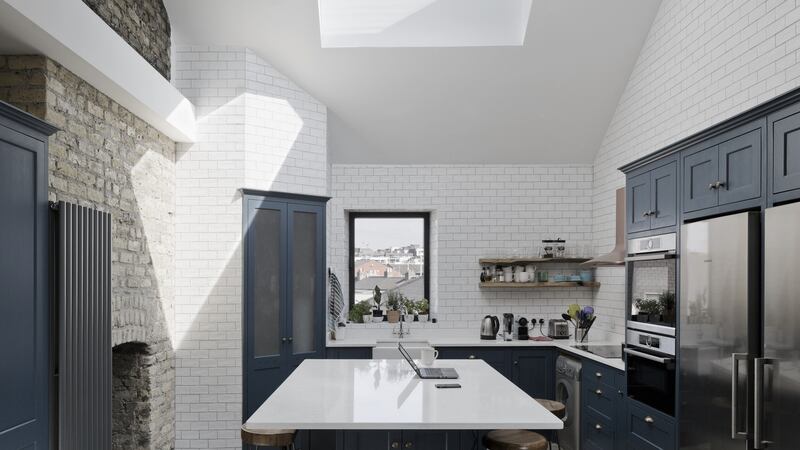This project involves the transformation of a Georgian three-storey terraced house from three bedsits into one light-filled, upside-down house. It’s now bright, sharp and clean cut on the inside, but it’s the mysterious, shadowy new black tower in the garden that marks this transformation as something out of the ordinary.
The original Georgian property comprised three floors of accommodation, which had been converted into separate studio bedsits on each floor. Most of the original decorative plasterwork and joinery features of the home had been lost, with the exception of the main hallway and staircase, which were reasonably intact. The roof was in poor condition, and in need of total replacement.
As each floor had been converted into bedsits, poorly constructed bathrooms interrupted the floor plan on every level, and the challenge for Scullion Architects (scullion.ie) was to turn this jumbled-up house into a home for entertaining and enjoying the views of its city-centre location.

Retaining the perimeter walls of the house, stairs, entrance hall and floors, an entirely new roof structure was inserted. The open-plan kitchen and living room were repositioned on the top floor where the occupants could best enjoy the light and views. Bedrooms were placed on the upper ground floor, with a garden-level living area and bedroom below.
Space-saving sliding doors give access to storage concealed within the thickness of walls, and opaque, glazed, steel-framed sliding doors give access to the new bathrooms from the staircase. The glazing in all stairwell doors allow borrowed light to reach deep into the middle of the house.
Game-changer
The decision to vault the ceiling internally, as well as flipping the floor plan to an upside-down arrangement is the game-changer here. By putting the living spaces on the top floor and the bedrooms below, this allows a generous open-plan space that is augmented by the vaulted ceilings on the upper level that would not be possible otherwise.

This is further enhanced by the introduction of a large seamless roof light at the apex, providing abstract views of the sky and allowing natural daylight to flood in all day long.
This is the power of design. It can transform a house type that we are all too familiar with into something extraordinary. It can defy logic, and make open-plan double-height spaces out of thin air.
The tower-like extension that was added to the rear provides new bathrooms, and a terrace leads from entry level to the lower, small rear garden. Shou Sugi Ban charred larch was selected to clad the tower, creating a shadow-like presence, with the dark carbon crust contrasting with the untreated natural copper parapet. Due to their proximity to neighbouring rear gardens, the bathrooms and upper-ground floor terrace have shielded views through charred timber screens which avoid direct overlooking.

The detail and texture of the timber box here is no doubt inspired by the great Scottish architect Charles Rennie Mackintosh, and in particular it references the extraordinary library in the Glasgow School of Art that was so sadly destroyed in a fire in 2014 (thankfully now being restored).
On the front elevation, new full-size windows were inserted into existing window openings with secondary frames concealed behind the brickwork. Glazing is maximised internally and from the street read as simply framed openings.
- Declan O'Donnell is an architect and founding partner of ODKM Architects, and occasional television presenter










